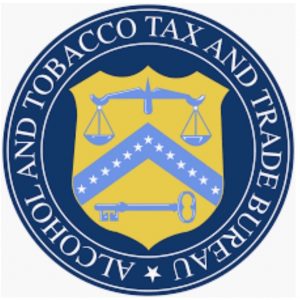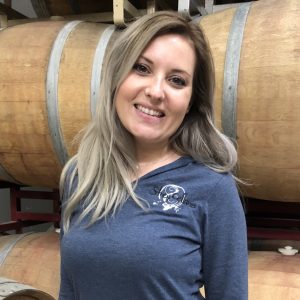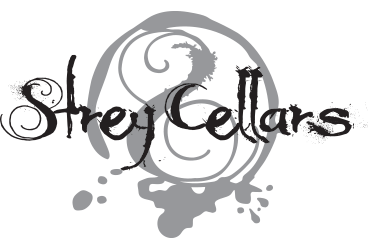07 Feb To Judge or Not To Judge

They say, “don’t choose a book by its cover” but how many of us are guilty of choosing a wine by its label? Not gonna lie, I am a sucker for a cool label. Particularly the more artsy ones, is there a scantily clad goddess with wind tousled hair and a crescent moon? I’m sold. Humor? I’m in! If the label has managed a fantastic pun, or clever tagline, I want it. I also tend to be disappointed. While eye-catching labels are super fun, they can definitely lead to an anticlimactic wine drinking experience. I am not saying all wine with a fun label isn’t good, it’s just not the best way to shop for wine.
I thought I would give you a few tips on choosing the perfect wine, by navigating the label, and not being bamboozled by advertising. The label IS very important, but legally, you don’t need any of the bells and whistles. The absolute basic information that is required to appear on a wine label is all you need, IF you are familiar with specific regions. Otherwise, it’s safer to choose a wine that has a more comprehensive label. Like one that includes tasting notes, although that’s not actually a requirement. However, a wine label is federally required to disclose a few facts:
- The producer (the brand)
- The region the grapes were grown in
- The vintage (the year the grapes were harvested)
- The varietal (the type of grape)
- The ABV (alcohol percentage)
- Contains sulfates
- Net contents (how much liquid)
- Name and location of bottler
- And the good ol’ government warning
Why are these specific things important? Well, mainly because of liability. It is important for everyone nationwide, not just our local Ventura County consumers to be fully aware of what they’re purchasing. Knowing things like the ABV for example, can make an impact on how much you choose to drink. If you have a sensitivity to sulfites, (although, you probably won’t be reading this if you do, because you probably don’t drink wine) there is a line specifically meant for you! Sulfites, not to be confused with sulfates, are a preservative that isn’t harmful, however, 1% of the population is sulfite sensitive. It’s not an allergy, though, so no, it’s not the sulfites that give you a headache. If you get headaches when you drink wine, it’s more than likely the histamines that cause the headache… or, you didn’t drink enough water and you’re dehydrated… I’ll let you be the judge.
I never paid attention to labels on anything until I was in a relationship with a guy who had PKU (Phenylketonuria, which is a genetic disorder that affects a person’s ability to process phenylalanine, an amino acid that appears in a lot of foods) and he had to read labels religiously to be sure he wasn’t ingesting anything that his body was unable to process. One of the wild things that I learned to pay attention to was gum labels. If you have a package of gum, you’ll notice a rectangle that says “Phenylketonurics: contains phenylalanine.” Learning this habit changed the way I shopped, and I began noticing things like warnings on labels. Just because there is a warning, or simply a fact stated, does not mean it’s dangerous. Labels are here to inform the consumer. So, be not afraid of labels, for they are our friends! This being said, submitting labels to the TTB can be super tricky.

Recently, Strey has had a label revoked several times because the wine, Torrontes, is not “recognized” by the TTB. Yes, these grapes are real, yes Torrontes exists, however, there are thousands of grapes in existence, and evidently, not all of them are recognized. This is quite conundrum for us because legally, there is information, such as the varietal that must be stated, but it would be like me writing “Unicorn” on the label… the TTB says there is no such thing. I will update you on how we manage to figure this one out. I am done pulling my hair out over the ridiculousness.
Another wine labeling growing pain was in our early days. Our 2010, 2011 and 2012 wines were made (meaning fermented) at another winery, thus triggering the infamous “Cellared and Bottled By” disclosure because Scott started making wine before opening Strey Cellars. 2013 through today are proudly “Produced and Bottled By” now that Harvest happens under our own roof. Federally you need to disclose where wine was produced and bottled. This is important for consumers to know. What if there was an issue with one of the wines? What if there was a problem with the facility these wines were stored and produced in? It’s imperative to know what the products you’re consuming are exposed to and as frustrating as it all can be, it’s somewhat comforting to know that these regulations are in place for our safety.

With wine, there are specific percentages that must be present in order to claim where the grapes came from. If you see a label that says, “California” but doesn’t specify where in California the grapes are from, it’s because percentages of the wine came from multiple AVAs. (In the last blog I talked about blending, and “legal requirements” for the name on the label.) Now, seeing “California” on the label, may or may not be helpful depending on your tastes, which is why most wineries strive to be more specific. If you love Lodi Zins, then you’ll be looking for a label that says Lodi, or Temecula, or Napa. Knowing the region helps you to make an educated guess on whether a specific wine is going to be appealing to your palate. I know this is not the most popular opinion, but personally, I LOVE a Sauvignon Blanc from Marlborough, New Zealand. In my early wine drinking days I would buy the same varietal from three different regions, just to taste the differences, and learn my preferences. If you are a wine lover, I recommend doing this yourself. You will open your taste-buds to a beautiful and fascinating world.
Vintages are important because you can use them as a reference when you’re shopping for wine. I have liked just about every 2012 Cabernet Sauvignon I have ever tried. 2012 was a great year for California wines. If you are holding onto any 2012 California wines, I’d say that now is a good time to pop those bottles! I have noticed my affinity to 2015 wines as well. while they are younger, they have a beautiful fruit pop on the nose that makes me want to dive face first into my glass. (2015 Cab Sauv, 2015 Tempranillo, I’m looking at you!)
Looking at wine labels should not be overwhelming, the important information is there. You probably have a phone in your hand, meaning you can google the winemaker, and your questions can be answered easily. Even faster, get the app Vivino. You take a picture of the label, and then reviews of the wine will appear, like magic! If you happen to be drinking a wine that isn’t on the app, or doesn’t have reviews, you can review the wine yourself, and make it easier for others to choose a wine. Remember that the wine world is like a community. We help each other out. When you share your experience, you can help other people find their favorite wine. I don’t love naked Chardonnays, but when I come across one, I take note because I know people who do. I think this is one of my most cherished parts of working in a winery is that we don’t have to prefer to have the same wine. We can all find something we love. And based on your preferences, I can direct you to your next favorite bottle of wine. But if you don’t have me to hold your hand, at least know the regions you love, the years you prefer, and the style you like.

Author’s Note: My name is Justine, and I have been a part of the Strey Cellars family since its infancy. Responsible for various roles, my favorite has been penning their blogs. During the hiatus of the pandemic, I took a leap of faith and began blogging and writing for additional niche websites. You can search them through my IG @justinethewitch. Strey Cellars is my home away from home and will surely be your new favorite Ventura County Winery. If this is your first visit to our blog, you’ll notice that I write as if we are old friends because this is the energy of our winery. Visit sometime and see for yourself! If you enjoyed this blog, please share it with a friend. Cheers!

